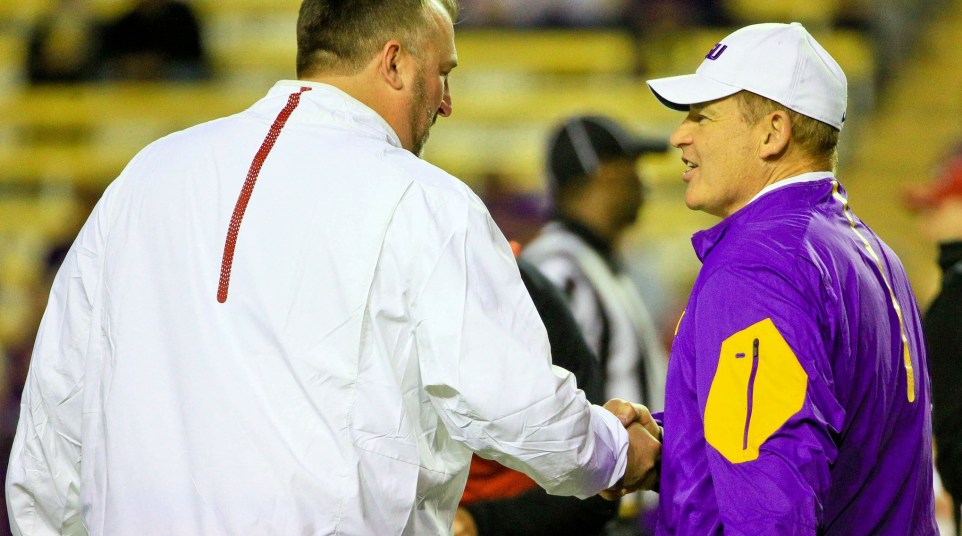
SEC adds pair of home-grown coaches, but still has a Big Ten flavor
The SEC is located in prime recruiting territory. Florida, Texas and Georgia are rivaled by only California in the quantity and quality of high school football players.
Though programs such as Alabama and Tennessee recruit several players from all over the country, most SEC players hail from within the SEC roadmap.
But coaching is another story. When legendary coach Steve Spurrier retired at midseason at South Carolina, the SEC didn’t have a single home-grown head coach.
On December 6, when Will Muschamp was announced as the new coach at South Carolina, he became the SEC’s only head coach who graduated from a member school.
The next day, fellow Georgia graduate Kirby Smart joined him when he was announced as coach of the Bulldogs.
What about Missouri’s Barry Odom? Though he played at Mizzou, the Tigers were in the Big 12 during his career as a linebacker.
The list of home-grown SEC coaching legends is long, including Bear Bryant, Vince Dooley, Shug Jordan, Charlie McClendon, Pat Dye, Phillip Fulmer, Jackie Sherrill and Johnny Majors just to scratch the surface.
Regardless, it’s surprising so few former SEC players are head coaches. It’s definitely a change from past decades.
Perhaps more shocking is that the list of current coaches includes four former Big Ten players — LSU’s Les Miles (Michigan), Arkansas’ Bret Bielema (Iowa), Kentucky’s Mark Stoops (Iowa) and Texas A&M’s Kevin Sumlin (Purdue).
Other prominent SEC coaches from the Big Ten footprint include Alabama’s Nick Saban (Kent State) and Tennessee’s Butch Jones (Ferris, Mich., State).
Others from outside the SEC footprint include Mississippi State’s Dan Mullen (Ursinas, Pa., College), Florida’s Jim McElwain (Eastern Washington) and Vanderbilt’s Derek Mason (Northern Arizona).
Coaches from the SEC roadmap, but not SEC alums include Auburn’s Gus Malzahn (Henderson, Ark., State) and Ole Miss’ Hugh Freeze (Southern Miss). Malzahn began school at Arkansas before it joined the SEC, but transferred.
Perhaps more than anything the high number of coaching imports in the SEC is a sign of the conference’s strength.
The nation’s best coaches are flocking to the nation’s top programs, schools where they have the resources needed to field teams at the highest level.
As recruiting players has gone national, so has recruiting coaches. The best coaches don’t all come from one region of the country.
The few months between Spurrier’s resignation and the hiring of Muschamp and Smart was a rarity, part of an endless cycle of changes.
Five years from now, it could all be different. Muschamp and Smart could be entrenched at their new schools and joined by other SEC alums at positions throughout the conference.
